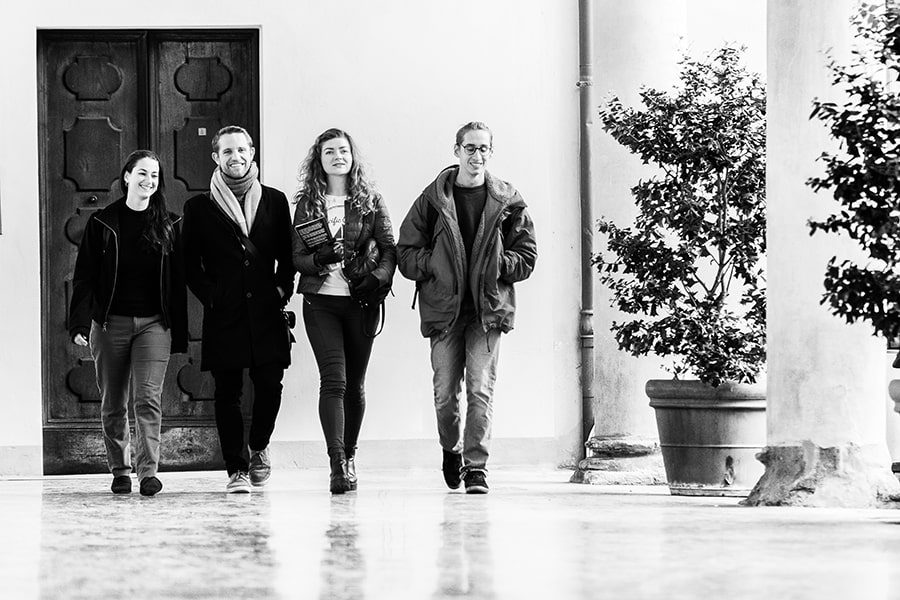Our Legacy | SAIS Europe
The vision for SAIS Europe dates back to 1955 when Professor C. Grove Haines, a diplomatic historian at the school, decided to launch a pioneering experiment in international education outside of the United States.

Bologna, Italy was the natural choice for the school’s European campus due to the city's social and political vitality, readily accessible gateway to Europe, North Africa and the Middle East, as well as Haines's friendship with the rector of the University of Bologna-the oldest university in Europe.
In 1955, the school opened its first overseas campus and welcomed 10 students, some of whom traveled from the US to Italy by ocean liner. Today, the campus is known as SAIS Europe and welcomes approximately 200 students from 40 countries who train under a resident core and language faculty, together with adjunct professors from Europe’s leading institutions and organizations.
Our degree programs emphasize international economics, international relations, EU policy and global risk with options to specialize in a broad range of other policy areas and geographic regions. And although the majority of students at SAIS Europe only spend one year in Bologna, they maintain a deep connection to their adopted city and often return to campus to reconnect and celebrate class reunions.
 The History of SAIS in Europe
The History of SAIS in EuropeMore than six decades ago, an experiment in international education was born in Bologna, Italy. Today, the center that started as a place to foster postwar transatlantic dialogue continues to bring a valuable European perspective to complex global issues.
On Feb. 22, 1955, with four professors, 10 students, and borrowed classrooms, Professor C. Grove Haines launched an experiment in international education. Haines, who had been the first full-time professor at SAIS, established 12 years earlier in 1943, wanted to provide advanced training to a select group of SAIS students representing various nationalities who were preparing for careers in international affairs. The vision was to offer these students the experience of living and studying together under a multinational faculty in an international environment, thereby encouraging cross-cultural communication and fostering collaboration among world leaders. Most students at the SAIS-affiliated center would work toward a Master of Arts in international relations, which required one year of study in Bologna and then the second year at SAIS in Washington, D.C.
Read the full article from the 2020 SAIS Magazine celebrating the 65th anniversary of SAIS Europe.